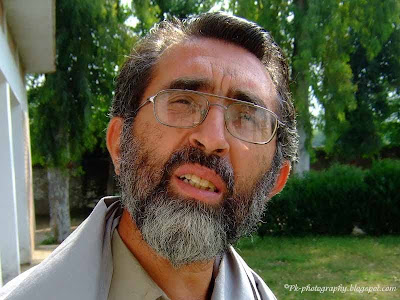A photography blog that focus on Pakistan natural beauty, people, culture heritage, customs and traditions, historical places, travel destinations, wildlife: flora and fauna.
Rangoon Creeper
Rangoon Creeper (Combretum indicum or Quisqualis indica), also known as the Chinese honeysuckle is a vine with red flower clusters in the family Combretaceae. It's found in Asia and other parts of the world either as a cultivated ornamental or run wild. It's a ligneous vine that can reach from 2.5 meters to up to 8 meters. The leaves are elliptical with an acuminate tip and a rounded base. They grow from 7 to 15 centimeters and their arrangement is opposite. The flowers are fragrant and tubular and their color varies from white to pink to red.
Rangoon Creeper
Land Planarian-Bipalium kewense
Bipalium kewense commonly known as "Land Planarian" is a species of predatory land flatworm of the family Geoplanidae, sometimes referred to as a "hammerhead flatworm" due to its semicircular head. Land Planarian is a common name refers to all species of flatworms in the family Geoplanidae. They lack a respiratory and circulatory system, a skeleton, and an anus. Feces are expelled through the moth. The individual I found was about 10cm long, however they could be as long as 50cm. They mainly reproduces asexually, by fragmentation of the posterior end of the body. They are carnivores, feeding on earthworms, small arthropods, and even other planarians.
Land Planarian (Bipalium kewense)
GIK Institute
Ghulam Ishaq Khan Institute of Engineering Sciences and Technology (Urdu: غلام اسحاق خان انسٹیٹیوٹ), also referred to as GIK Institute or GIKI, is an engineering institutes in Swabi, KPK, Pakistan, named after former Pakistani president Ghulam Ishaq Khan. The institute was registered in 1988 by its parent body, the Society for the Promotion of Engineering Sciences and Technology in Pakistan (SOPREST). Ghulam Ishaq Khan, while president of Pakistan, was elected the president of the Society for life and Mr. H. U. Beg was appointed its honorary executive director. The ordinance of the institute was promulgated by the Khyber-Pakhtunkhwa Government in March 1993, and the first batch of students was inducted the same year in October.
Source: wikipedia.org
Source: wikipedia.org
GIK Institute
Faisal Mosque Islamabad
Faisal Mosque Islamabad, which serve as the national mosques of Pakistan, is the largest mosques of Pakistan. It's the forth largest mosque in the world.
The Faisal Mosque was named after the late King Faisal bin Abdul-Aziz of Saudi Arabia, who supported and financed the Pakistan government initiative to construct a National Mosques.
Construction of the mosque began in 1976 and completed in 1986. It was designed by Turkish architect Vedat Dalokay. The Faisal Mosque has covered area of 54,000 sq ft. It can accommodate 10,000 worshipers in its main prayer hall, 24,000 in its porticoes, 40,000 in its courtyard and another 200,000 in its adjoining grounds. Each of the Mosque's four minarets, which are the tallest minarets in South Asia are 260 ft high.
 |
| Faisal Mosque Islamabad |
Construction of the mosque began in 1976 and completed in 1986. It was designed by Turkish architect Vedat Dalokay. The Faisal Mosque has covered area of 54,000 sq ft. It can accommodate 10,000 worshipers in its main prayer hall, 24,000 in its porticoes, 40,000 in its courtyard and another 200,000 in its adjoining grounds. Each of the Mosque's four minarets, which are the tallest minarets in South Asia are 260 ft high.
 |
| Faisal Mosque Islamabad |
Subscribe to:
Comments (Atom)





















































